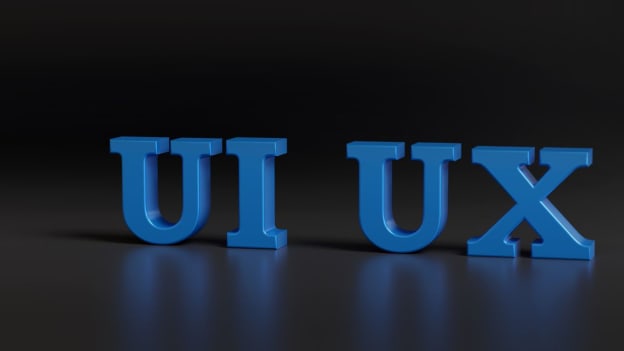Revolutionising recruitment: Understanding UI/UX's impact on hiring platforms

Beyond being mere buzzwords, UI (User Interface) and UX (User Experience) serve as the foundational pillars of every digital platform. They encompass not only the visual appeal but also the practicality, inclusivity, ease of use, and overall resilience. In our increasingly tech-savvy world, individuals routinely evaluate digital and physical entities alike by their initial impression and their ability to stand the test of time.
In this age of hyper-connectivity, where our interactions with technology are constant and seamless, the significance of UI and UX cannot be overstated. They shape how we perceive and engage with everything from mobile apps to websites, from smart devices to e-commerce platforms. To gain more insights on UI and UX, we got in touch with Aditya Malik, Founder and CEO of Valuematrix.ai.
What are UI and UX?
In simple terms, User Interface (UI) encompasses all the visual elements that initially capture a user's attention on a digital platform. This includes things like colours, fonts, icons, images, and animations. Each choice in the colour palette is carefully selected to evoke specific emotions in users, and a UI designer's skill lies in aligning these choices with the brand's identity and the platform's purpose.
On the other hand, User Experience (UX) takes a broader view, focusing on the entire journey users have while interacting with a digital platform. It's like orchestrating a well-planned symphony, where every step is designed to make the user's experience easy, engaging, and interactive. This process often follows the principles of Design Thinking, which keeps user needs and preferences at the forefront.
“To enhance this user experience further, Artificial Intelligence (AI) plays a pivotal role. AI analyses user behaviour and aggregates data on the target audience's personality traits. By doing so, it tailors the digital platform's interactions to suit individual preferences and needs. This AI-driven approach isn't limited to just one industry; it's applicable across a wide spectrum, from e-commerce to recruitment and beyond,” explained Aditya Malik.
“In essence, UI captures the user's attention, while UX ensures they have a seamless and satisfying journey. Together, they form the cornerstone of creating digital platforms that not only look good but also deliver exceptional experiences. This user-centric approach, powered by AI, has the potential to transform various industries by making interactions more personalised, efficient, and enjoyable for everyone,” he added.
UI/UX in hiring platforms
When it comes to hiring platforms, they cater to hiring agencies, talent acquisition teams, and potential recruits. There are some unspoken rules that UI/UX developers need to follow. From designing high-quality screens and interfaces to creating sophisticated yet user-friendly programs for an immersive user experience, developers need to craft the perfect formula for an engaging hiring platform that aligns with today's technology and user preferences.
“Hiring platforms demand specific UI and UX considerations. Since both recruiters and candidates use these platforms, they should feature interactive graphical elements like user-friendly dialog boxes, scroll bars, design layouts, and loading animations to enhance the user experience. In any hiring scenario, a company seeks a qualified candidate. When both the recruiter and candidate are using a hiring platform, they naturally expect it to match the standards of the most advanced and established tools in terms of look and functionality,” Malik told People Matters.
How to enhance hiring platforms with UI/UX?
The success of these platforms isn't solely determined by their functionality but also by the quality of their User Interface (UI) and User Experience (UX). A well-crafted UI/UX can significantly enhance the effectiveness of a hiring platform, making it more attractive to both recruiters and job seekers. Hence, the CEO of Valuematrix.ai shared a few tips on how can one elevate hiring platforms:
1. Cognitive analysis tests
In modern cognitive assessments, the key lies in subtle patterns and getting the right baseline. Maintaining a neutral UI/UX design, without altering the final outcome, can define a well-designed platform.
Utilising advanced deep learning and expertise in neuro, psychometric, and behavioural sciences, modern AI platforms can effectively assess various cognitive, analytical, and behavioural traits required for specific roles. In an era where the process can become monotonous with just text and voice, today's digitally immersed candidates may lose interest. This is where gamification comes into play.
By incorporating elements like goals, rewards, a points system, and colorful progress bars, users become more engaged. Although gamification is relatively new in the professional world, it holds immense potential, especially considering that 75% of the global workforce will be comprised of Gen Z and Millennials by 2025.
2. Video Interactions
When an interviewer and interviewee are present on video conferencing on a hiring platform, subtle things need to be considered from a UI/UX perspective. Grouping features with similar functionalities in organised colour-coded tabs is one way of improvising the video conferencing experience. The users should be just a couple of clicks away from any feature they would like to use, like the background effect or screen-share options.
3. Graphical Control Elements
These include the tabs that give instantaneous instruction, direction, or basic information. In the overall page layout design, there must always be leeway for such in-page windows; the task here is to make it look neat and clean. This is where effective visualisation skills come in. While a new in-page window appears from the top-right corner, the data tab on that corner could fade out, giving way to the new window inflating from that corner. Once the interaction is over or when the timer runs out, the window could pop like a balloon and expose the original contents in that space.
4. Future of UI/UX in hiring platforms
As we pass through years of leveraging AI for various purposes, we have entered yet another portal to even advanced technologies. “Technological concepts like the Metaverse have opened doors to using AR and VR to enhance gaming experiences, professional conferences and virtual tours. And leveraging the power of AR/VR can become a course of action, the viability of which is yet to be seen,” said Malik.
“Therefore, including AR/VR in hiring platforms may demand a thorough revamp of existing UI/UX ideas to make them befitting. Further raising the bar to attain excellence in UI/UX, new and emerging technologies will keep challenging the ways and norms on which designers work. But a hawk's eye to the ever-changing dynamics of the HR and People Tech world can lead to creating a hiring platform that seamlessly hits the bull's eye when it comes to UI/UX,” he concluded.















